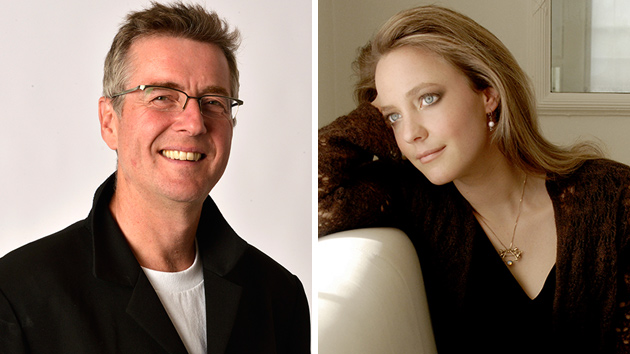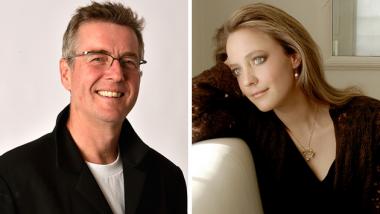
British conductor Paul Goodwin made his debut with the San Francisco Symphony, last Saturday, replacing Bernard Labadie, who is undergoing treatment for lymphoma. Goodwin was hired to cover for the Canadian baroque specialist, who expects to return to work in the 2015-2016 season, in a program with music from Bach and Mozart, featuring German soprano Lydia Teuscher.
Given his credentials, it is remarkable that Goodwin has never worked with the Symphony before. Aside from his early music experience (he is artistic director and conductor of the Carmel Bach Festival and was formerly associate conductor of the Academy of Ancient Music) he also has extensive symphonic experience, which includes orchestras from all over the world.
Making her SFS debut together with Goodwin was the fantastic soprano Lydia Teuscher. She sang two individual arias from operas by Mozart: "Al desio, di chi t'adora" from the 1789 revival of The Marriage of Figaro, and "Ruhe sanft, mein holdes Leben" from the unfinished Zaide (1780).
Teuscher’s voice is simultaneously agile and lyrical; she sensitively but very precisely shifts from one mood to another. Her high register is delicate, her middle register more darkly hued, and her low notes could sometimes be mistaken for those of a mezzo.
Teuscher’s voice is simultaneously agile and lyrical; she sensitively but very precisely shifts from one mood to another.Teuscher’s singing reflects the musical tradition she was trained in. Her performance is highly technical, but not in an intrusive way. She is playful and measured, with impeccable diction and only a faint trace of her native German in the Italian of the Figaro aria.
The two Mozart arias are very different in character; the one from Figaro is more vivacious and exuberant; the Zaide aria is more melodious and flowing. Together they gave Teuscher more than enough to work with to charm the Symphony audience. Her performance in the J.S. Bach cantata after intermission was just icing on the cake.
The Wedding Cantata, BWV 202, also contained some of the orchestra’s finest playing of the evening, with the oboe gently meandering along with the soprano’s voice, responding to and encircling her melodic lines of the opening aria. The meticulous interaction between harpsichord, cello and voice in the aria “Phoebus eilt mit schnellen Pferden” (Phoebus hurries with swift horses) was another highlight.
That performance was in contrast to the Bach composition that opened the concert, the Orchestral Suite No. 3, in which the orchestra’s phrasing and intonation were far less in sync and the trumpets regularly crossed the line between prominence and loudness. In Mozart’s “Paris” Symphony (No. 31), which concluded the concert, the ensemble fared much better.
My ears may have been spoiled by the abundance of excellent period orchestras in the Bay Area, but I sometimes think that the San Francisco Symphony could easily dispense with pre-Mozart repertoire and leave that to more specialized ensembles.
On the other hand, I completely understand how wonderful it is for Symphony musicians to play baroque music, and especially Bach. And fortunately, there is an audience for it, because Davies was packed for this concert.
It is too bad that it sometimes takes an emergency replacement to establish a new connection between a conductor and an orchestra, but the meeting between Goodwin and SFS may be a good thing to result from Labadie’s unfortunate absence. And who knows where it may lead? Perhaps to more Bach and Mozart; but given Goodwin’s resume, it would be interesting to hear him conduct something more modern.
And Lydia Teuscher is welcome back no matter what.

